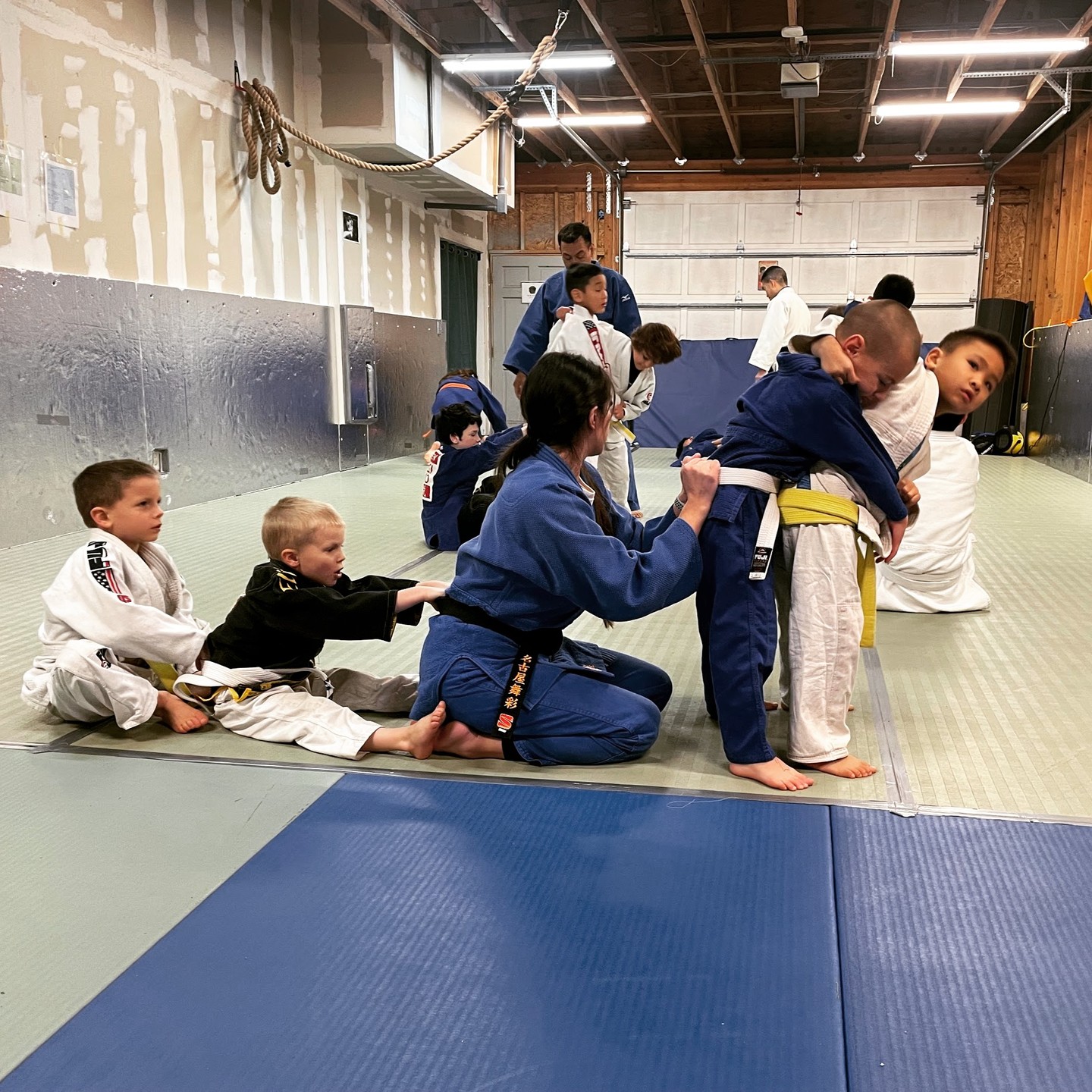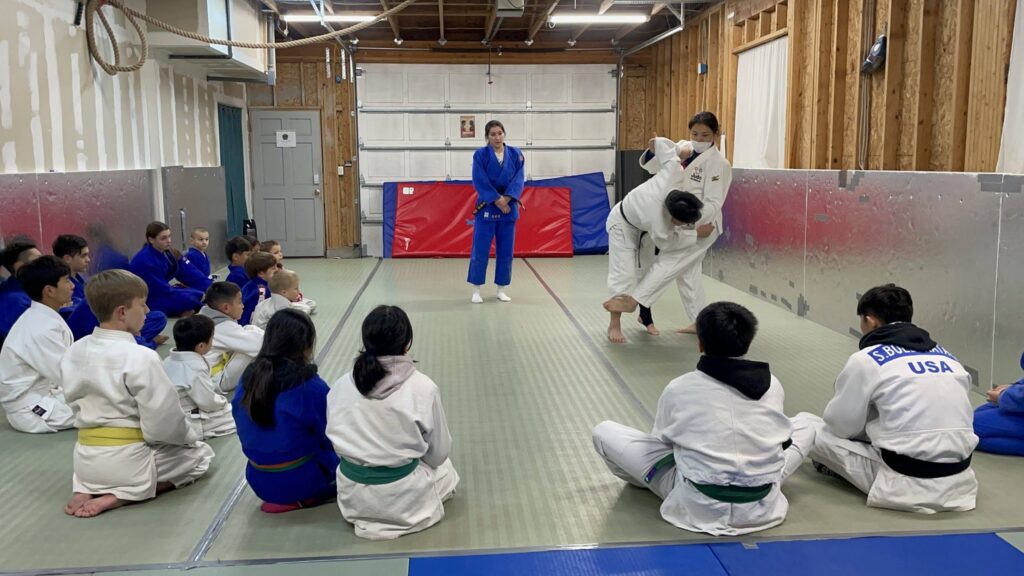Support our mission - bring world-class judo to WA with your donation 🙏❤️
How to choose a martial art school for a kid

Martial arts undoubtedly offer numerous benefits for children, including physical development, confidence-building, discipline, self-defense, and a chance to emulate their favorite action movie characters. This is why many parents consider martial arts to be an excellent after-school activity for their kids. However, the multitude of martial arts styles to choose from can be overwhelming, such as Judo, Karate, Taekwondo, Brazilian Jiu-Jitsu (BJJ), Boxing, Wrestling, Kung-Fu, Muay Thai, and many more.
If a parent has prior experience in martial arts, they may choose the same style for their child to foster a shared interest in the sport and provide guidance at home. But how can a parent pick the best martial arts program for their child if they lack prior experience or want something different from their childhood? Additionally, even if a particular martial art is preferred, multiple schools may be available in the area. For example, if you search “Judo near me” while in Kirkland, several Judo clubs will appear within a 15-mile radius, and you will also find dozens of Brazilian Jiu-Jitsu clubs spread across Bellevue, Redmond, Bothell, Renton, and Seattle.
In this article, we will share our experience in selecting a martial arts school for children in general and explain why Judo is one of the best options for kids.
Let your kid fall in love with the sport first
Regardless of whether you want your child to enjoy martial arts as a hobby or become a top-level competitor, your top priority should be to allow them to develop a love for the sport. Even if your ultimate goal is for your child to become an Olympian or an elite MMA fighter, it’s essential to let them enjoy the sport first. You want them to anticipate their next class, learn how to behave, and listen to their instructor.
If you do it right, your child will be enthusiastic about learning and improving, they may be asking you to let them compete in a tournament instead of you pushing them. Additionally, you can use martial arts classes as a tool to reinforce discipline and ensure your child stays on top of their homework, with attendance to martial arts classes as a reward for good behavior.
The main focus should be on discipline and following instructions to build good fundamentals. Although classes for younger children often incorporate games to capture their interest, the coach still directs these games and children learn how to follow commands.
With these priorities in mind, you can select any martial arts school where you trust the instructor to teach your child discipline, hard work, and martial arts fundamentals. Consider observing your child in multiple trial classes to gauge their reaction and level of attention received. The school may also offer multiple levels of programs tailored to beginners or advanced students. If the class appears too difficult or too easy for your child, ask the instructor if they are at the appropriate level.
Regardless of the martial arts style, it’s crucial for children to enjoy the sport and learn self-discipline in their training. If your child has the opportunity to attend multiple schools or a mixed martial arts (MMA) club where they can cross-train in various disciplines such as striking (e.g. boxing) and grappling (e.g. Brazilian jiu-jitsu), take advantage of it! Allow your child to explore the martial arts world and determine what they enjoy most.
Children who enjoy what they are doing are more likely to stick with it and put in the effort to improve. When kids are pushed too hard too soon, it can create a negative experience that turns them off to the sport altogether.
Keep reading to learn about additional considerations when choosing the best program for your child.

Atmosphere and community
Atmosphere and community play an important role in choosing a martial arts school because they can greatly affect your child’s experience and progress. A positive and supportive atmosphere can inspire and motivate your child to learn and grow, while a negative and toxic environment can have the opposite effect. By choosing a school with a welcoming and friendly community, your child will have a better chance of building strong relationships with their peers and instructors, which can lead to a sense of belonging and enjoyment in practice. Additionally, a supportive community can provide your child with a network of friends who share their interests, which can help to foster long-term dedication and commitment to the sport. Ultimately, by prioritizing atmosphere and community in your choice of martial arts school, you can help ensure that your child has a positive and enriching experience that will benefit them both in and out of the dojo.
It makes sense to ask if a martial arts school hosts social events like potlucks, movie nights, or outdoor activities for members. These events are a good sign that the club has a positive and supportive community that you and your child will enjoy participating in.


Club and coach credentials
It’s important to ask about a martial arts club’s certification and the instructors’ credentials when choosing one for your child. Legitimate schools typically have affiliations with regional or national governing bodies, for example, USA Judo or USA Wrestling.. Mixed Martial Arts clubs may have multiple affiliations for different programs. These affiliations allow athletes to represent the club at sanctioned competitions and often provide insurance coverage for injuries, provided that the athlete is registered with the appropriate governing body.
If a governing body exists for a sport, but a club lacks affiliation, this could indicate that the club was decertified for some violations. To ensure safety, it’s important to verify the club’s status with the governing body by sending them the club’s address. Keep in mind that the club’s name may not be enough since it could have been changed. You should also check the SafeSport database to see if any instructors have active sanctions against them.
In addition, it might be a good idea to ask about the club’s competition results, especially if your child wants to compete. For instance, you can look up a Judo club’s statistics on Smoothcomp. However, it’s crucial to remember that competition results shouldn’t be the sole factor in choosing a club. What matters more for long-term success in the sport are the fundamentals that kids learn at the club, rather than the number of the medal count.
Lastly, ask the instructors about their martial arts credentials, including who the most senior-ranked person in the club is, how long they’ve been practicing martial arts, where they learned, if they have competition experience, what their students’ achievements are, and what their formal rank in the sport is (black belt and etc). Remember that a successful athlete isn’t always a good coach, and a good coach doesn’t need to be an Olympian. What truly matters is the coach’s passion for the sport, understanding of its mechanics, and genuine care for each athlete’s long-term success.

Fundamentals and structure of the program
At a young age, it’s essential to focus on building solid fundamentals that would help kids achieve long-term success in the sport. The program should be well-structured and ideally cater to different age groups and skill levels. For instance, the club may offer parent-assisted classes for young children to spark their interest, a separate class focused on the basics for students who can follow instructions independently, and an advanced class for those competing in the sport, emphasizing conditioning and competition tactics.
It’s essential to pay attention to how much attention students get to maintain proper form and how consistent the form looks across the class when performing a drill together. Having multiple assistant instructors on the floor is generally beneficial, as it would allow each kid to get more attention.
It’s important to prioritize solid fundamentals, as some techniques may be easy to execute with poor form for short-term gains in tournaments or sparring. However, those who have developed good fundamentals will have the ultimate advantage as they get older.
Be cautious of clubs prioritizing profit or the medal count over children’s long-term success in the sport. Check out this article for signs of a so-called McDojo and avoid signing any contracts if offered.

Physical development
Physical development is another important consideration for children in their martial arts journey. An ideal martial art program should promote well-rounded physical development, including flexibility, strength, explosiveness, coordination, basic acrobatic skills, and agility. A martial art that meets all of these criteria would provide an excellent foundation for any sport a child may choose to pursue in the future.


Why Judo?
Judo is an excellent example of a martial art that checks all these boxes. It is a martial art that involves a lot of throwing, grappling, and ground fighting techniques. Judo has been derived from Japanese Jiu-Jitsu, which should not be confused with Brazilian Jiu-Jitsu, which originated in Judo with a focus on ground fighting techniques. You can think of it as wrestling in a Gi where practitioners can grip each other’s uniform to perform a technique like a throw. Overall, Judo training promotes well-rounded physical development for kids, including:
- Flexibility: Judo involves a lot of stretching and range of motion exercises, which can improve flexibility.
- Strength: Judo requires a lot of upper and lower body strength to execute techniques such as throws and holds.
- Explosiveness: Judo throwing techniques require quick bursts of energy, which can improve explosive power.
- Coordination: Judo techniques can be quite sophisticated and require precise timing and coordination between different body parts.
- Brain development: Besides coordination, a Judo practitioner needs to develop the ability to combine multiple techniques in a series, properly time them, and anticipate their opponent’s reaction and movement. This is why fighting IQ plays a significant role in becoming successful in Judo. It requires a lot of cognitive processing and decision-making, which can lead to enhanced brain development in children.
- Basic acrobatic skills: Judo involves falling and rolling techniques and basic acrobatic skills such as cartwheels, round-offs, and handstands are often incorporated into a typical Judo warm-up routine.
- Agility: Judo techniques require quick movement and agility to evade or attack opponents.
And as a traditional Japanese martial art, Judo also promotes important values such as respect, discipline, and sportsmanship. This can help kids develop character and improve their overall well-being.
Try searching for “Judo for kids” in your area and then reach out to the clubs that you find.
